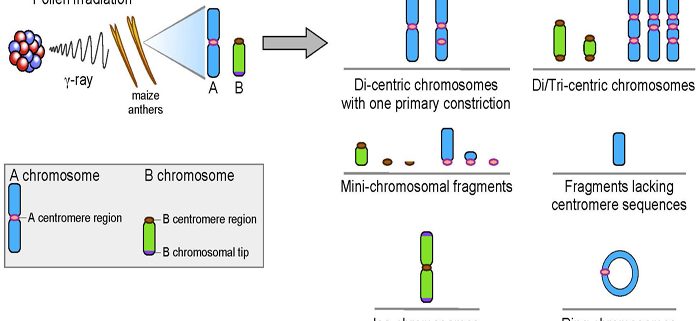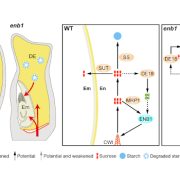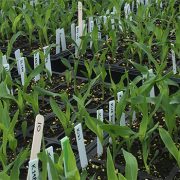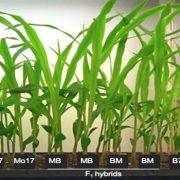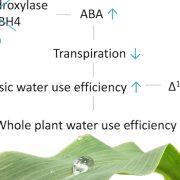How do Chromosomes Evolve via Unstable Intermediates?
Yalin Liu, Handong Su, Jing Zhang, et al. explore centromere birth and death by inducing rearrangements via pollen irradiation in maize. Plant Cell https://doi.org/10.1105/tpc.20.00389
Background: The centromere is one of the most important components of chromosomes. Every normal chromosome has one functional centromere. The centromere is essential for accurate orientation and distribution during each cell division. During evolution of chromosome number, genomic studies have shown that end-to-end fusions and insertion of one chromosome into another near the target centromere have occurred with minimal rearrangement. This situation would produce chromosomes with two centromeres, which other studies have shown will lead to drastic rearrangements. These evolutionary genomic studies suggest that centromeres can become inactive or that de novo centromeres can arise quickly, but there was no experimental system that addresses this issue.
Question: We wanted to know whether centromere activity can be changed in a short timeframe, including new centromere formation and centromere inactivation, and how these chromosomal changes are related to centromere function. We tested this idea by checking the F1 seeds from gamma irradiated pollen in maize for immediate cases of centromere inactivation or de novo formation.
Findings: Pollen from plants with supernumerary B chromosomes (which are dispensable for survival, unlike regular A chromosomes) was gamma irradiated and then applied to normal maize silks of a line without B chromosomes. Among ~8000 first-generation seedlings, many B-A translocations as well as centromere expansions and ring chromosomes were recognized. Many dicentric chromosomes were also with only a single primary constriction suggesting inactivation of one centromere. Also, chromosomal fragments were found without canonical centromere sequences in which we confirmed the presence of de novo centromere formation over unique sequences. These results illustrate the regular occurrence of centromere birth and death following chromosomal rearrangement and that these events occur during a narrow developmental window spanning one to potentially only a few cell divisions.
Next steps: The most important and challenging work is to find the special chromatin environments that determine new centromere formation, and the chromatin states to maintain centromere function.


